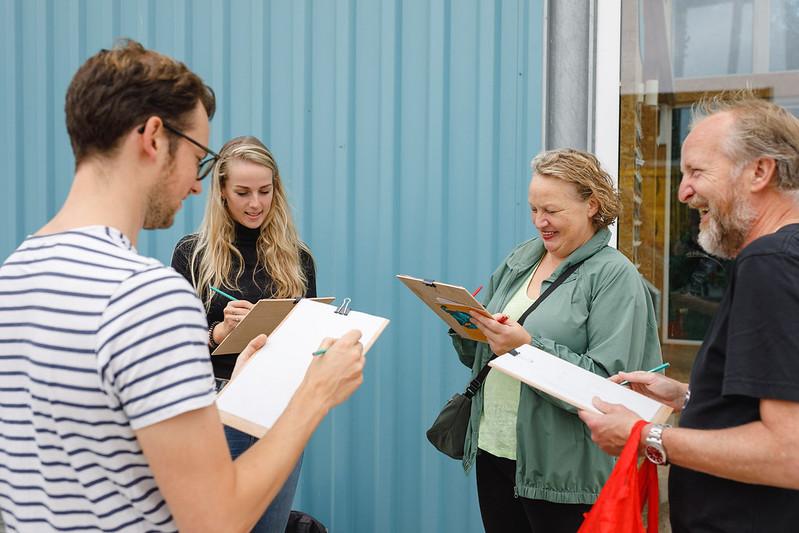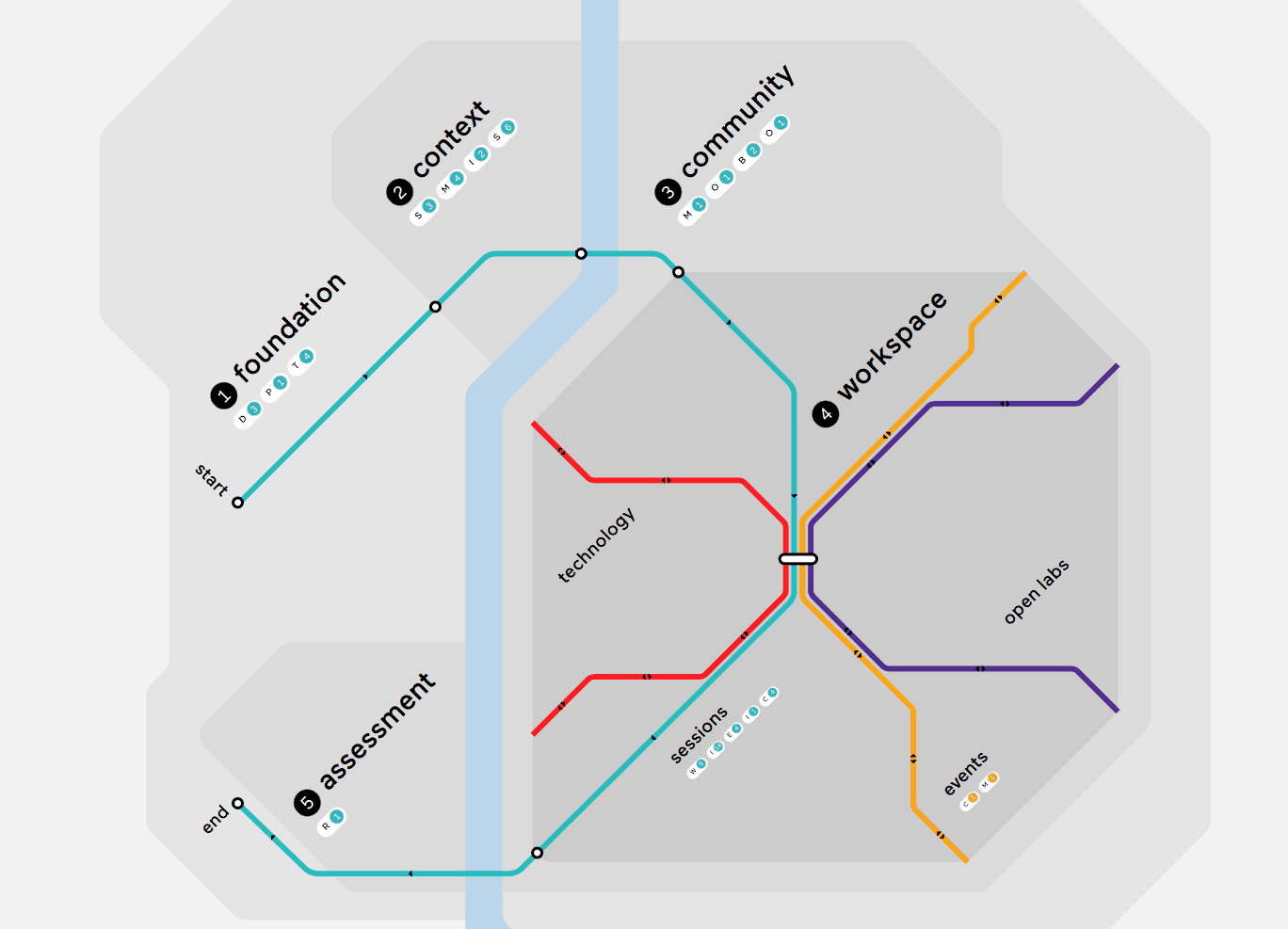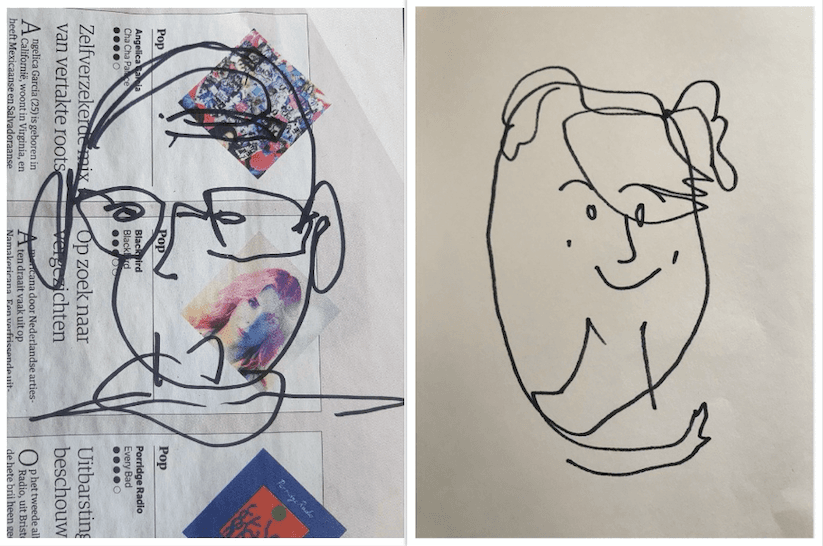The Co-creation Navigator, hosted by Waag, now boasts a new set of tools for citizen sensing. Waag started the Co-creation navigator as a toolkit for anyone who wants to work with co-creation. It consists of a roadmap, filled with tools and practices to guide you and your peers through a co-creation process. Next to this, the Smart Citizens Lab at Waag is highly experienced when it comes to citizen sensing. This is a collaborative process in which citizens measure, for example, air quality, in order to contribute to a larger open data set for everyone to use - from researcher to amateur. Since citizen sensing processes can profit from co-creation, the experts at Waag added specific steps for citizen sensing to the Co-creation Navigator.
Co-creation is a values-based, inclusive approach that focuses on bringing together different societal actors around matters of shared concern. Citizen sensing is a collaborative process and therefore it fits well on the navigator. The navigator guides you through the different stages of co-creation: from preparation to execution.
Citizen sensing
Waag’s Smart Citizens Lab has developed a citizen sensing approach through which we enable citizens to collect, analyse, and share data about their living environment. This work has been conducted through different projects, such as Mobility Urban Values’ 10 steps to Citizen Sensing, and the Citizen Sensing Toolkit created in the Making Sense project. The tools, steps, and principles described in earlier work have now been compounded into four subheadings on citizen sensing in the Co-Creation navigator: strategy, data collection, data analysis, and knowledge sharing. Down below are some notes that go with each new section on the Co-creation Navigator.
Strategy
Collecting data about your environment is the at the core of citizen sensing. Before you do so, it is useful to decide on a strategy together with your sensing community. In the project Hollandse Luchten, for example, Waag hosted multiple sessions to decide on our strategy in the different measuring communities. You can find the methods we used during those sessions under the strategy tab.
Data collection
Data collection can be done in multiple ways. You can choose to collect both quantitative or qualitative data. The Co-creation Navigator includes different sensing techniques for each. When designing a new sensor, be sure to use open source technology so that anyone can use it to measure their environment.
Data analysis
An important aspect to data analysis is ensuring that your participants are data literate. This is quite a new area for citizen sensing. The Smart Citizens Lab is researching tools that can enable citizens to analyse data by themselves. sylke ⟨ at ⟩ waag.org!
Knowledge sharing
Lastly, knowledge sharing. In our view, citizen sensing provides citizens with a more active role, that goes beyond simply collecting information about their environment. With citizen sensing, we make sure that the citizens can take their data and positively impact their surroundings through them: by making their knowledge public, and discussing it with the people around them. Importantly, this creates moments for engagement with the sensing community. They are your key co-creators in any citizen sensing project.
Co-creating co-creation methods
While some of the newly added tools are tried and tested methods for citizen sensing, others are completely new. For example, the public stack puzzle is based on the public stack created by Waag under Digital European Public Spaces. We developed it as part of the research for Shared Cities, Smart Citizens, an exploration into the governance of data commons. In this research, Hollandse Luchten is a case study. Through several meetings and internal sessions we developed a tool based on the public stack to help identify areas for improving citizen engagement in Hollandse Luchten, which can be applied to any other project.
To tap into our co-workers’ experience with different co-creation methods used in the Smart Citizens Lab over the years, we went on a discussion walk around the Nieuwmarktbuurt. This is how we came to discuss data literacy and wanting to research methods to enhance it.
Visit the Co-creation Navigator
We now invite you to have a look at the Co-creation Navigator, to browse through the new additions and to discuss and share them in your (sensing) communities. The citizen sensing additions can be found in the workspace, but if you are starting a project from scratch, it is useful to run through steps one (foundation), two (context), three (community) and finish with five (wrap-up). From Waag's experience with citizen sensing, we added a few methods to these other zones, as well as a decision-making tab under 'wrap-up'.
Subscribe to the Smart Citizens Lab newsletter. And let us know if you are thinking of starting your own citizen sensing project! Or if you are already working on something, and know of tools that should definitely be included in any citizen sensing/co-creation overview. We'd love to hear from you.


